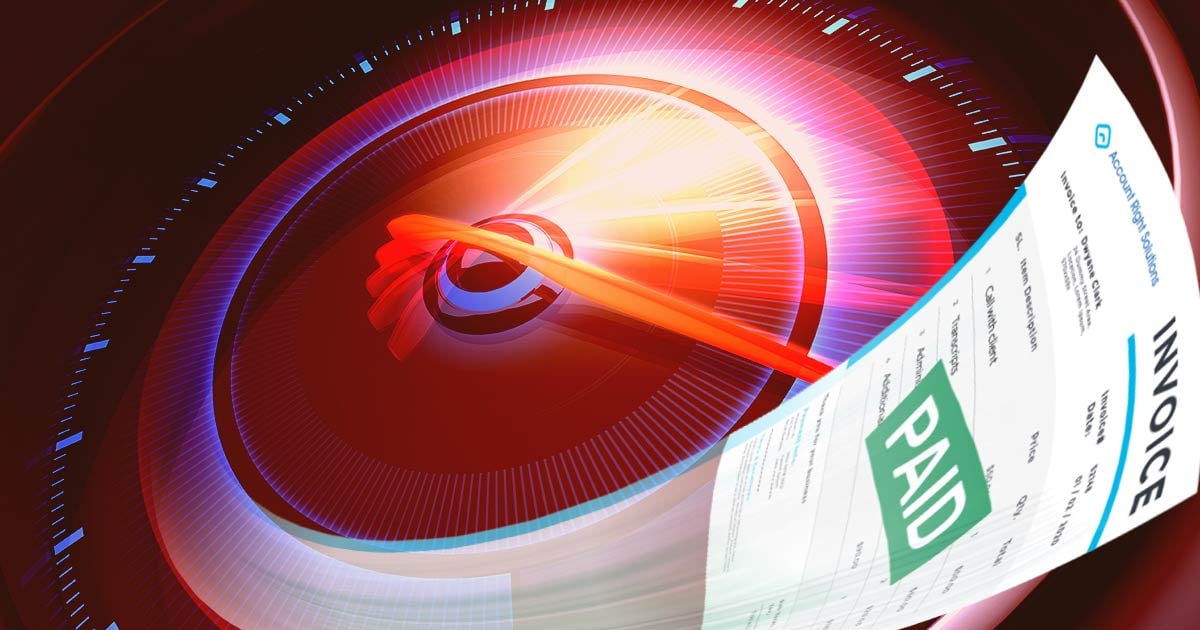Cash flow is the lifeblood of your business and payment delays can cause liquidity issues that can threaten the future of your company.
Across the UK, payment delays have a significant negative impact every day. Despite UK SMEs representing 99 per cent of all businesses, 1 in 7 of those businesses have had to delay paying staff because of cashflow issues caused by late payments.
To put that in context, this means that 2.2 million workers every year are paid late because of delays in payments being processed.
Late payments, coupled with delayed processing for traditional methods of payment such as cash and cheques, also have a material business impact. SMEs spend, on average, £4.4 billion per annum chasing late payments and have to turn away an average of £26,000 in work because of liquidity issues.
The time frame for processing traditional payment methods only exacerbates this problem, extending the time between invoicing and the money actually clearing into your accounts receivables.
Thankfully, digital payments for SMEs offer a solution to these issues.
The payment challenges faced by UK SMEs
Businesses across the spectrum regularly encounter multiple issues when it comes to traditional payment structures. However, these issues disproportionately impact SMEs who need a certain level of consistent cash flow in order to operate.
Some of the more common issues encountered by SMEs include:
Payment processing costs
The processing of paper checks comes with an overhead cost that, while it is a very small amount per transaction, builds up over time. This accumulation of fees, just for getting paid, does have an impact on your businesses bottom line.
Payment delays
As we have already noted, UK SMEs are constantly facing cashflow issues caused by late payments.
The longer processing time required by traditional payment methods only exacerbates this problem, increasing the number of Days Sales Outstanding (DSO) and further impacting liquidity.
Effective credit control issues
Implementing effective credit control over your accounts receivables requires full visibility over all your payments, completed and outstanding.
Because of the significant delays created by the slow payment processes cycles of paper payment methods, the need for manual intervention in the recording process, and the complicated sourcing or remittance information, traditional payment methods can slow or even bottleneck your accounts receivable.
Security risks
Around 60 per cent of all business to business fraud is related to the use of paper checks because of poor authorization controls. SMEs who continue to use these methods open themselves up to far greater risks than those transitioning to digital methods.
Low overall visibility
As mentioned, visibility is key to good credit control.
Because of the number of disparate, error-prone, and lengthy processing methods associated with traditional payment methods, creating this visibility over your accounts revivable in order to create business plans and resolve disputes can be difficult if not impossible.
Traditional vs. digital payments
Cash and paper cheques still play a major role in the accounts receivable process for most small and medium businesses. However, as noted, these systems come with the downsides of increasing long delays, financial complexity, processing costs, and security risks.
By comparison, digital payment methods are quicker, easier, and fit more readily into the digital landscape of modern business.
With the pandemic forcing most businesses to become digital facing over a short period of time, or face losing much of their work or customer base, newer digital payment solutions have become a vital part of effective credit control.
An excellent example of this is the use of a payment gateway or portal.
Instead of paper invoicing followed by paper payments in a labour intensive and time-consuming process, payment portals allow SMEs to put all of the required invoicing and payment information in front of their customer in one easy to access format.
Chaser’s payment portal also includes a wide range of digital payment methods as well as standard credit and debit card options.
Accessible straight from one of our automated invoice reminders, our Payment Portals give your customer full visibility over total amounts owed and the widest range of payment options. This helps you get paid faster and more often.
The benefits of switching to a digital payment process
Switching to a digital payment process comes with a huge range of benefits for small and medium businesses, including:
Quicker reconciliation
Instead of paper payment methods which can take days to reconcile and show up on your accounts receivables, digital payments are, by and large, an instant process.
This is particularly true when combined with a Payment Portal as this allows the customer to pay for multiple invoices in the manner best suited to them.
These payments then show up in your accounts receivable ledger, reducing the need for manual reconciliation, allowing staff to be re-focused on higher-value tasks.
Lowered processing costs
Switching to a digital-first model for payments removed the need for common payment processing fees.
In addition, because of the lack of need for manual reconciliation in a lot of cases, the associated staff costs are also reduced.
Increased compliance
In the wake of large-scale data breaches that have revealed millions of customer banks details, such as the Equifax breach, data security has become an increasingly important and visible issue.
Nearly all providers of digital payment services abide by the Payment Card Industry Data Security Standard (PCI DSS) (See Stripe) with ensures the secure processing, storage, and transmission of credit card data.
Using these PCI DSS compliant services enables businesses to ensure both their customer’s and their own data is handled securely.
Improved cash flow
Allowing customers to access the widest range of payment options and taking advantage of the faster processing times offered by digital payments allows SMEs to access a much faster cash conversion cycle, massively improving their cash flow.
Greater visibility
Owing to the real-time nature of digital payments, businesses that make use of them are able to update their accounts receivables in real-time. This gives them access to greater strategic insights that can be used to further refine their credit control processes.
Adapting to the customer’s digital needs
So far, we have focused on the benefits of switching to digital payment for businesses, but there is another group that benefits from that transition.
Your customers.
Whether you are B2B or B2C, offering your customers the widest and most convenient range of payment options streamlines and improves their customer experience.
Demonstrating that you have taken steps to improve your customer’s journey is an excellent way to build on your relationship and ensure repeat business.
How can Chaser help you implement digital payments?
As a market-leading automated credit control platform, Chaser has all the tools you need to transition to digital payments, including:
Dedicated Payment Portals
The Payment Portal available in Chaser makes it as convenient as possible for your customers to access a complete overview of outstanding and paid invoices.
This complete overview of what they owe and when it is due allows your customer to make faster payments more often and have a better understanding of their own finances.
To make the experience as streamlined as possible, your customers can access a dedicated payment portal directly from your initial invoice or any of our automated payment reminders.
From there, they can make payment through a range of different digital payment options.
The portal connects seamlessly with your Chaser account, allowing you to customise your portal to reflect your brand and to add notes to specific portals via the Receivables tab.
Pricing models to suit your business
We understand that there is no ‘one-size-fits-all’ approach to businesses, which is why we offer a range of pricing models to suit your businesses needs.
Our prices start at £29 per month for the basic package.
Depending on the plan you choose, you will have access to benefit such as integrations with some of the best AR management software on the market, dedicated payment portals, full account management, and even discounted collection services.
If you’re not sure what level your business needs, you can talk to our dedicated and knowledgeable sales team who will be able to guide you through the options.
Moving forward into a digital future
While switching to a digital payment system is not going to solve all of the issues surrounding late payments and cash flow issues for small and medium-sized businesses, it is certainly a way to overcome the many challenges presented by traditional payment methods.
Using Chaser, you can quickly and easily adapt your business to offer a wide range of digital payment options, allowing you to get paid faster and more often.




